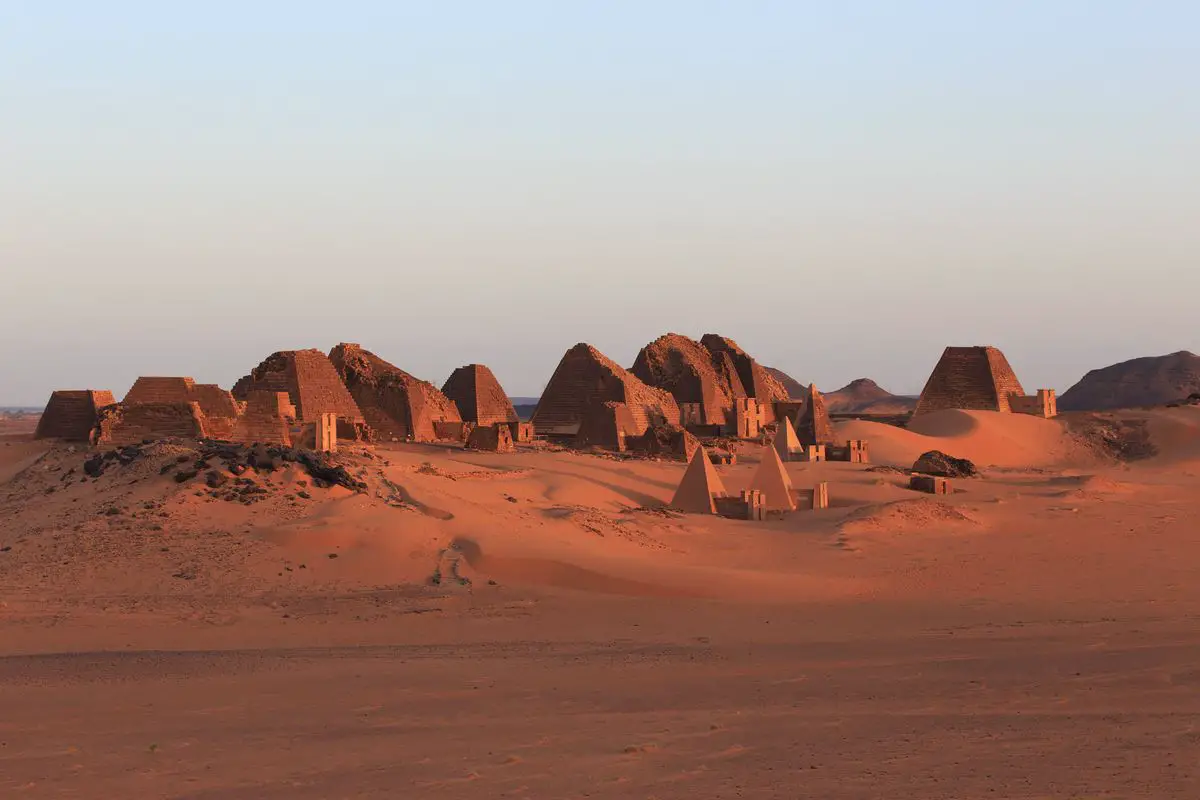Wondermondo 🢖 World 🢖 Wonders of Africa 🢖 Wonders of Sudan
Territory
Wonders of Sudan
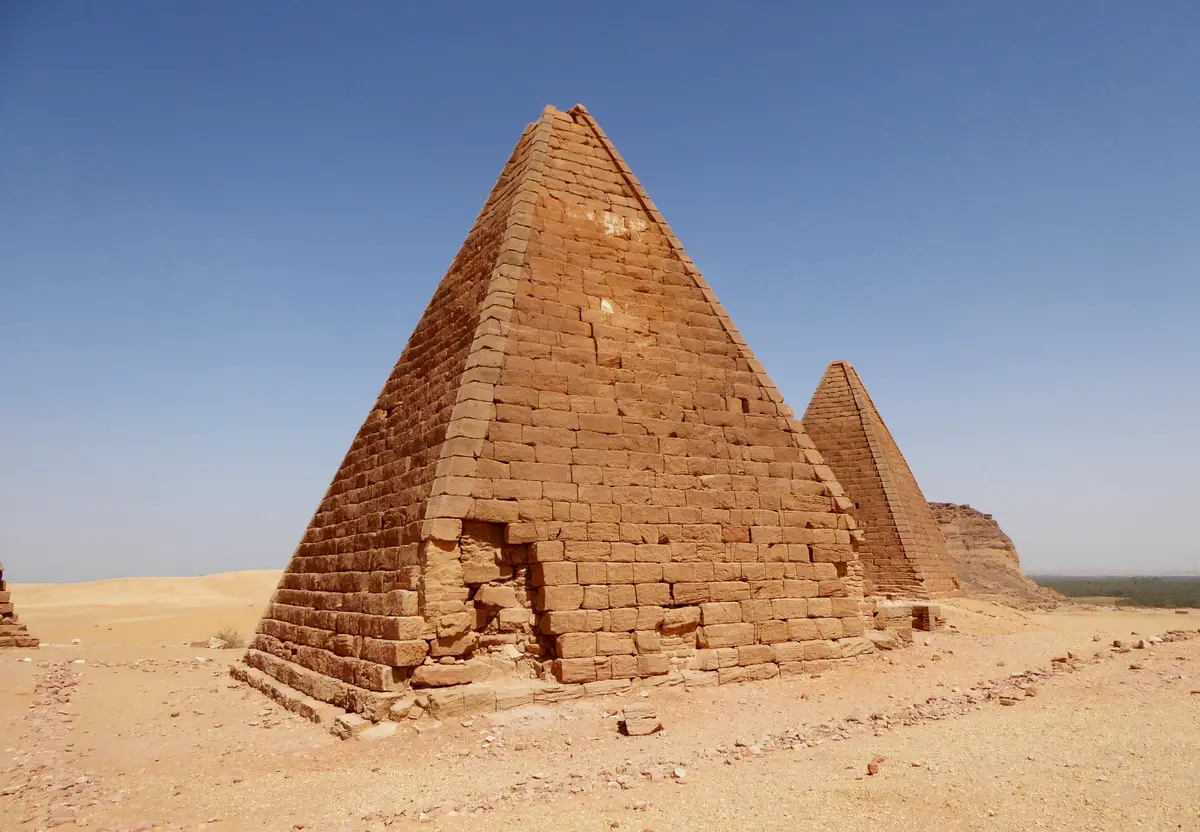
 Highlights
Highlights
Sudan is enormous and extremely interesting but, alas, a rather little-known country. Unfortunately, several parts of the country for decades are suffering from warfare and there is little known about them.
The most exciting wonders of Sudan are its unique archaeological monuments. Sudan has been a cradle for several great cultures, each leaving interesting landmarks:
- Kingdom of Kerma is one of the most ancient comparatively advanced cultures in the world. It flourished in present-day Sudan in 2500 – 1520 BC. By far the most important landmark of this culture are the ruins of Kerma but there are other sites as well.
- Kingdom of Kush existed from 1070 BC to 350 AD and has left many monuments with very distinct styles of architecture and art. Best known are the steep-sided pyramids of Meroë, Jebel Barkal, Nuri, and Kurru.
- The Christian states – Makuria, Nobadia, and Alodia (Alwa) – existed in the 4th century – 1504. Their legacy is the sites in Old Dongola (capital of Makuria), Faras (capital of Nobadia), and Soba East (capital of Alodia), as well as other sites.
Exciting are the landmarks left by very old cultures, which existed before the kingdoms – such as the rock gongs along the Nile and in other sites (Dirbi Island, Wadi Abu Dom), the oldest known cemetery of war victims (Cemetery 117).
Too little known is the heritage of war-torn Darfur and Kordofan, but there are reports about the grandiose ruins at Ayn Farah in Darfur.
Map with the described wonders of Sudan
Please add some markers to your posts before using this shortcode.
 Top 25 wonders of Sudan
Top 25 wonders of Sudan
Archaeological wonders of Sudan
Meroë
River Nile
Ruins of an ancient city, the former capital of the kingdom of Kush in 800 BC – 350 AD. The most amazing monuments are more than 200 pyramids, mostly in a ruined state – an ancient necropolis. Once an important center of metallurgy.
Kerma (Doukki Gel)
Northern
The former capital of the Kingdom of Kerma. The development of this ancient city started around 3000 BC, although people here settled already in the Mesolithic period. Kerma evolved into the center of one of the earliest African civilizations. The city contained a protected zone for the elite population. In the city are located ruins of two enormous towers – deffufa – religious buildings. It is possible that the royal palace was a round building, also royal tombs are circular.
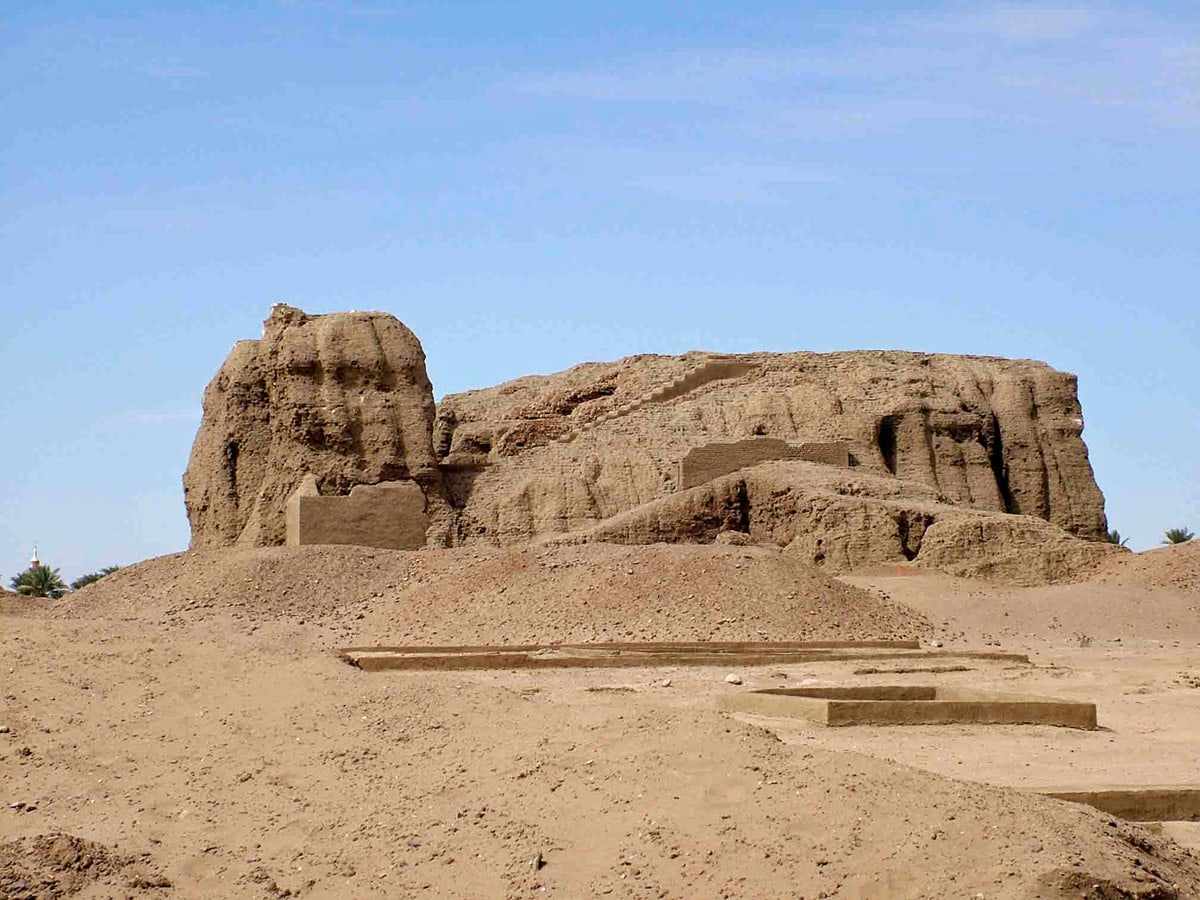
Nuri pyramids
Northern
Necropolis where the kings of Meroë were buried for three centuries. Construction started in the 7th century BC and contains 20 pyramids up to 40 m high. Burials were adorned and inscribed with magical writings. In the burials were mummies.
Tombos
Northern
Southernmost Egyptian settlement – colony, inhabited around 1550 BC. In the cliffs around the Nile were important Egyptian inscriptions and drawings. Here is located also a later Kushitic cemetery with more than 2,000 tombs. Some tombs have small pyramids over them.
Napata
Northern
Ruins of an ancient city-state, capital of the kingdom of Kush in the 8th – 7th century BC. Ruins of 13 temples, and 3 palaces.
Jebel Barkal (Gebel Barkal)
Northern
A small mountain – the southernmost outpost of Ancient Egypt. It was established sometime around 1450 BC. The mountain has been a sacred place since these times or even earlier. Later here, in the neighboring Napata city developed the independent kingdom of Kush. Notable monuments are the steep-sided pyramids, where were buried kings of Meroe in the 3rd – 1st century BC.
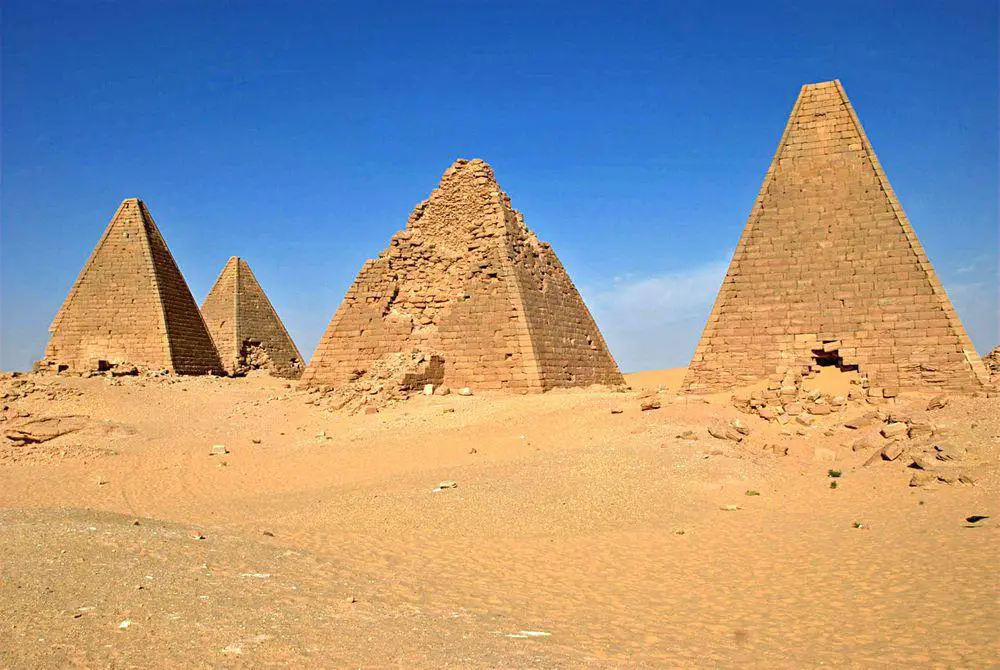
Suakin (Sawakin)
Red Sea
Old, abandoned city on a rounded island in the Red Sea. This ancient settlement experienced an increase of importance in the 10th – 13th centuries when it was still a Christian town. Declined in the 16th century. Now the active city is on the land surrounding the island, while the island is almost abandoned.
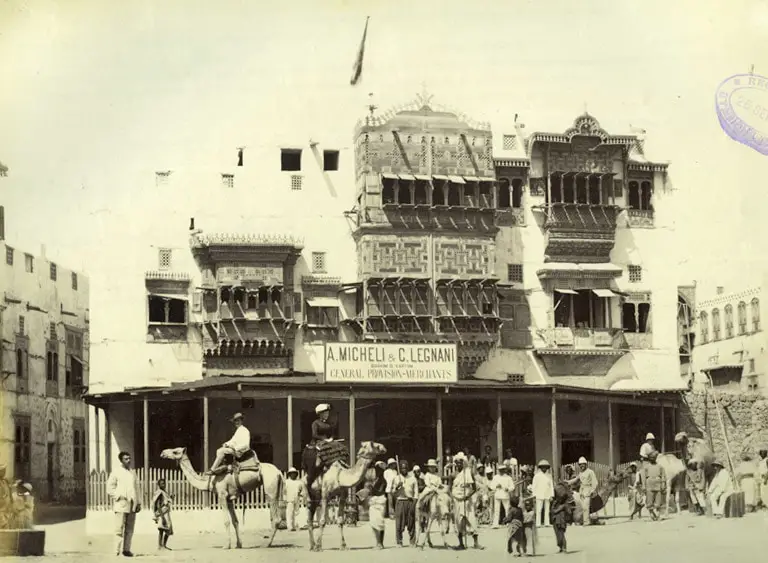
Kulb (Kulub)
Northern
Former fortified Christian village, Christianity was practiced here up to the 15th century AD. Here up to recent times was located a round church from the 12th – 13th century.
Faras
Northern
Remnants of this city are now located under the water of Lake Nasser. Important ancient town for Meroitic and ancient Egyptian states. Flourished in the 5th century, when the city was the capital of the Christian kingdom Nobatia. Here was built a cathedral and the frescoes of the cathedral were in an excellent state of preservation and represent the best example of Nubian Christian art. Now frescoes (more than 160) are located in Warsaw and Khartoum.
El Kurru pyramids
Northern
Group of pyramids some 10 km south of Jebel Barkal. The oldest graves are not pyramids and were created sometime around 860 BC. The oldest pyramid was built around 716 BC, next to it are 24 graves for horses. The pyramid of king Tanatomun (664 – 655 BC) and his mother Qalhata still contain well-preserved frescoes and hieroglyphs.
Naqa
River Nile
Interesting ruins of ancient Kushitic city. The city flourished in the 2nd century BC – 4th century AD. Ruins of two temples devoted to Amun and Apedemak and several more temples.
Saï Island fortress
Northern
This island in the Nile has been inhabited for at least 100 000 years. Here are located extensive ruins of Egyptian fortresses and temples (the 15th – 14th century BC). Nearby located also a very ancient necropolis, starting from the times of the kingdom of Kerma, including the later ancient Egyptian, Napatan, Meroitic, and later burials. Graves have eroded and human remains are scattered around the island.
Old Dongola
Northern
The former capital of the Christian state of Makuria. Founded as a fortress in the 5th century AD, soon evolved into a walled town. Several churches were built here in the 6th – 7th century, the cathedral was built at the end of the 7th century AD. Declined in the 14th century, as it was invaded by Arabs.
Musawwarat es-Sufra (Musawarat)
River Nile
Ruins of ancient Kushitic ceremonial center that flourished in 270 BC – 350 AD. Remains of several temples such as the Great Enclosure which includes three main temples.
Cemetery 117
Northern
The world’s oldest known cemetery of war victims. Three cemeteries, dated 12,340 – 11,140 BC. Here have been found remnants of 59 bodies, some 40% of them have violent wounds – e.g. stone projectiles of spears or bolts in their bodies.
Kawa
Northern
Ruins of a large (40 ha) ancient town and religious center at the bank of the Nile. Flourished in the 14th – 4th century BC.
Wadi Abu Dom Rock Art
Northern
Unusual site of rock art some 30 km from the Nile. 15 known rock art sites contain at least 5,000 years old carvings of mysterious symbols: spirals, cupules, something like nets. Part of the carvings show Christian symbols and might be created some 1500 years ago. Found also rock gongs that can be heard for a long distance.
Sesebi (Sessibi)
Northern
Remnants of a fortified town, built by the pharaoh of Egypt Akhenaten around 1340 BC. Remnants of four temples.
Banganarti churches
Northern
An important center of Christian pilgrimage near Old Dongola. In the 7th – 9th century, Banganarti was an island in the Nile with several beautiful churches that were adorned with multiple frescoes and graffiti. The latest inscriptions are from 1350 AD.
El-Barga cemetery
Northern
One of the most ancient necropolises in Africa. Burials here were made by some of the first settlers of Africa in 7300 – 5500 BC.
Uronarti, Shelfak
Northern
Ruins of ancient Egyptian fortresses – settlements on an island in the Nile. These are the few Egyptian outposts in Nubia that are above the level of Lake Nasser. Fortresses were built here in the 19th century BC and have 5 m thick and 10 m tall walls.
Soba East
Khartoum
Ruins of the last capital of the Christian state Alwa. The first church was built here sometime around 580 AD and in later centuries this town flourished and was rich and beautiful. Declined in the 12th – 13th century.
Dirbi Island rock gongs and petroglyphs
River Nile
There are found rather many ancient rock gongs around the 4th Cataract of the Nile, but the highest concentration is on Dirbi Island. Here are found also numerous petroglyphs. Located in the 4th Cataracts, flooded by Merowe Dam.
Architecture wonders of Sudan
National Museum of Sudan
Khartoum
A very important collection of archaeological artifacts, the best museum to learn about the ancient kingdoms of Nubia. Contains numerous exciting and unique values.
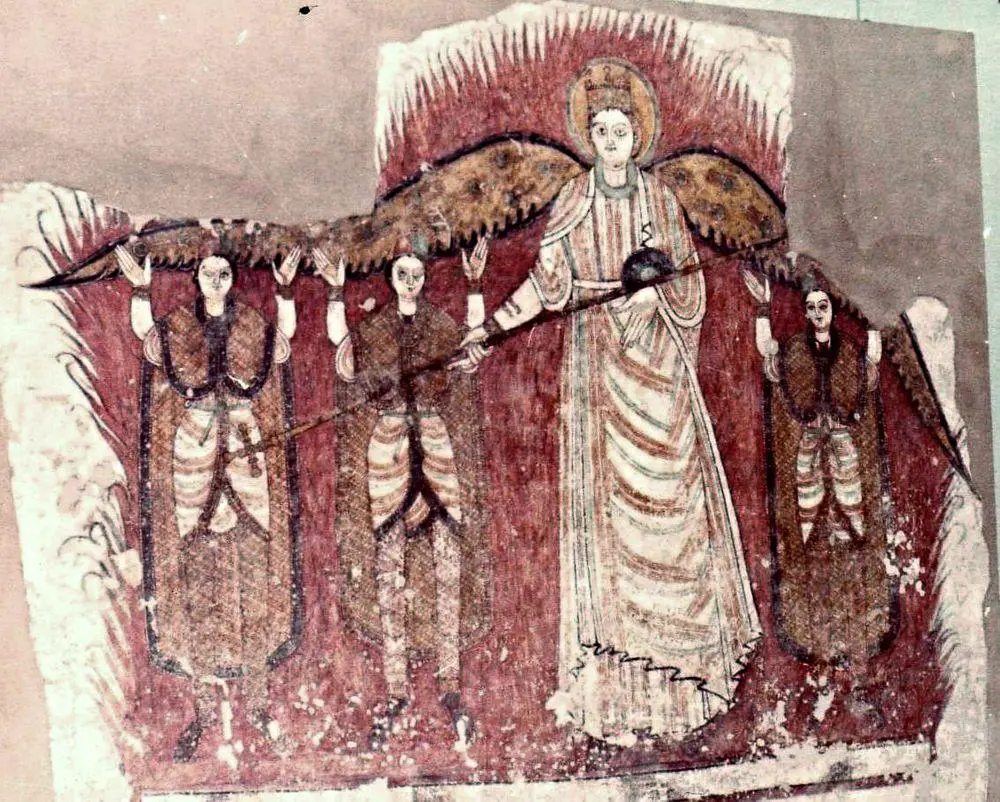
Burj al-Fateh (Corinthia Hotel Khartoum)
Khartoum
Skyscraper of an unusual, egg-shaped form. Constructed in 2008, 18 floors.
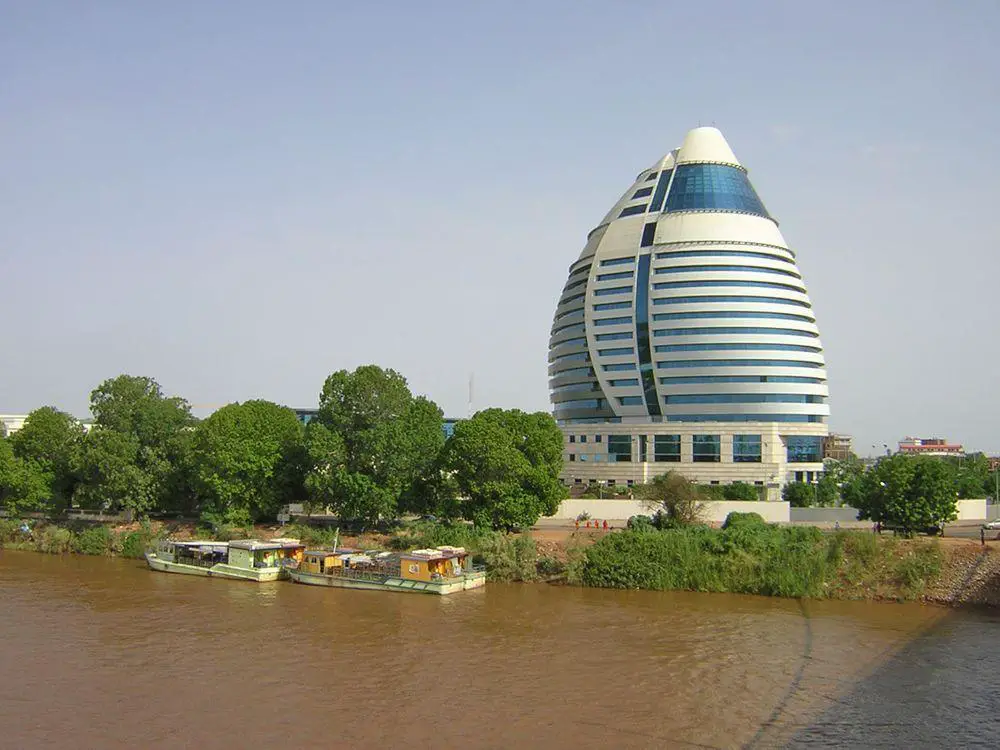
 Recommended books
Recommended books
Sudan (Bradt Travel Guides)
Sudan is vast, ranging from desert lands in the north to tropical forests in the south. Its wildlife rivals eastern Africa and it is one of the most ethnically diverse countries in Africa. This is the only stand-alone guide on the market and delves deep into the country’s past, bringing to life its cultural heritage and history.
Dinka: Legendary Cattle Keepers of Sudan
This seminal volume on the indigenous African Dinka group is a landmark documentation of a vanishing people in war-torn Sudan. World-renowned photographers Angela Fisher and Carol Beckwith have devoted their lives to documenting the rapidly disappearing ceremonies and cultures of the indigenous people of Africa. In breathtakingly poignant images, they present a story that started with their first visit to the Dinka thirty years ago.

